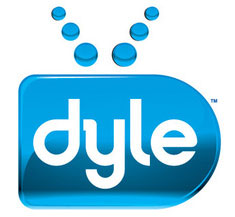Harris DIY kit for mobile DTV is only half the solution
Harris Broadcast is now offering a pre-configured, factory-certified equipment package that gets stations on the air quickly with a Mobile DTV signal that complies with the ATSC A/153 standard. It’s a veritable do-it-yourself (DIY) kit that Harris says is targeted at the more than 430 U.S. television stations participating in the Mobile500 Alliance.

What about the Mobile Content Venture (MCV) www.dyle.tv/and its “Dyle” initiative? Can’t they also benefit? The MCV, also known as Pearl, LLC, is made up of 12 major broadcast groups (such as Belo Corp., Cox Media Group, E.W. Scripps Co., Gannett Broadcasting, Hearst Television Inc., Media General Inc., Meredith Corp., Post-Newsweek Stations Inc. and Raycom Media), as well as the Fox, ION Television and NBC networks.
The Mobile 500 Alliance (http://www.mobile500alliance.com/) claims 51 member companies, including eight public broadcasters, which hold licenses to 437 television stations.
From the outset of Mobile DTV in the U.S., the Mobile 5000 Alliance and the MCV have appeared to be at odds with each other, when they should be working together. Mobile DTV won't be successful if that does not happen. Both groups are part of the Open Mobile Video Coalition (OMVC), which theoretically should be coordinating the entire launch of Mobile DTV service in the U.S. Where isthe OMVC in bringing to the two together?

Based on a study it commissioned in 2011, the OMVC says that over-the-air broadcasting is a far more efficient use of wireless spectrum than unicasting the same live video stream hundreds of times to every mobile phone that wants to watch local TV. Where’s the study that says the service won't make it without close coordination and industry-wide cooperation?
The Harris DIY package includes everything a station needs to transmit an over-the-air signal to mobile devices that have the required receiver chip installed. There’s the Harris Selenio for signal encoding, Harris Apex M2X software-based exciter, and middleware (from Expway) to allow stations to transmit a program guide and digitally insert targeted commercials.
This latter piece is key the Mobile 500 Alliance’s proposed business model, according to John Lawson, the group’s executive director. Consumers might be more willing to use the stations’ mobile TV service if they can watch local broadcast programming on their cell phones for free.
The professional video industry's #1 source for news, trends and product and tech information. Sign up below.
Harris said the DIY solution meets requirements to support the advertising-supported business model of the Mobile500 Alliance, with applications for banner ad placement on program guides, channel-change advertising, audience measurement, and DVR-like capabilities to record and playback content. There’s no mention of the Pearl group.
“Consumers win because they get the ad-supported content they value, without a new data plan or monthly subscription,” he said. “Broadcasters win because we create a platform for new advertising inventory that our sales teams know how to sell.”
The solution also supports content protection using conditional access software, and Harris plans to add Mobile EAS capability in 2013 to support emergency alerting. These are key to convincing content owners and the givernment that the service warants attention (and spectrum).
The Mobile500 Alliance plans to provide a free app for Apple iPhones and iPad tablets called “MyDTV,” making it easy for consumers to find and watch their favorite local TV station on their mobile device. The Pearl group is also offering a new application, the “Dyle” app that tunes in live broadcast programming and receives it using compatible chips.
Harris said the new DIY kit will help smooth the launch of these mobile channels and get broadcasters’ signals into consumers’ hands sooner. Thus far, without the DIY kit, about 130 stations have begun distributing a mobile signal (most simulcasting their main local HDTV channel, commercials and all). Harris has supplied the necessary equipment to 90 of those stations. The problem is that only a limited number of receiver chips are now available in markets across the country and thus not many consumers are watching.
The Harris DIY kit comes pre-assembled and ready to plug into an existing DTV transmitter. The OMVC says stations are now able to reach 94% of U.S. TV households with their current DTV signals. If only the industry could come up with a receiver chips that is as plug-and-play. A dongle won't do it.
